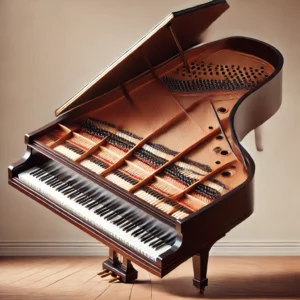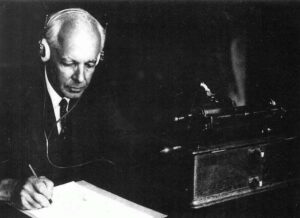3 Powerful Strategies to Improve Piano Sightreading.
Hello, I’m Tom Donald from the London Contemporary School of Piano and today we are going to talk about how to improve piano sightreading.
Today, we’re going to tackle a topic that many pianists love to hate: sight reading. No matter where you currently stand with your sight reading abilities, improving even by 10%, 15%, or 20% can have a massive positive impact on your playing. It can accelerate your learning of new pieces, enhance your comprehension of music, and propel your musical progression forward.
In this comprehensive guide, we’ll look at how to improve piano sightreading skills. We’ll explore three powerful strategies that can revolutionise your approach to sight reading, helping you not just to get better but to master the way you practice sight reading. Please feel free to watch the supporting video tutorial below for a more comprehensive masterclass on this topic.
Understanding the True Nature of Sight Reading
Sight reading isn’t merely about sitting down with a score and reading note by note, verbatim, while looking up and down between the music and the keyboard. That mechanical, unmusical process is not how we want to approach sight reading.
Consider how you read a book. You don’t read each word in isolation without understanding the bigger picture. You comprehend sentences, paragraphs, and the overall context. Similarly, effective sight reading requires understanding what’s behind the notes—the musical structures, patterns, and harmonies that give the music its meaning.
Why Do Many Struggle with Sight Reading?
The main issue isn’t that people don’t know where the notes are on the stave; it’s that they lack comprehension of the music’s underlying elements. They don’t understand the language of music—the harmonic, polyphonic, and structural aspects that make up a piece.
Some of the best sight readers are conductors who can read and interpret an entire orchestral score at a glance. They achieve this because they have a comprehensive understanding of the music’s deeper concepts.
Three Strategies to Improve Piano Sightreading.
There isn’t a single magic formula to crack sight reading, but by approaching it from multiple angles, you can achieve significant results. Here are three strategies to help you revolutionize your sight reading skills.
1. Visualising the Keyboard Vertically
Flip the Keyboard
Imagine flipping the piano keyboard so that the high notes are up in the sky, and the low notes are down on the floor. This visualization aligns the keyboard with the musical stave:
- Top of the Stave: Represents the higher notes (sky).
- Bottom of the Stave: Represents the lower notes (ground).
This verticalization helps you see the stave as a reflection of the keyboard. The notes on the staff correspond directly to the keys on the piano but oriented vertically.
Understanding Octaves and Ledger Lines
The musical notation system typically spans three to four octaves in each hand to avoid excessive ledger lines, which can make the music difficult to read. By understanding where each note fits within these octaves, you can more easily interpret the music.
Use a Sight Reading Crib Sheet
Creating a crib sheet that maps out all the C’s on the keyboard and their positions on the staff can be incredibly helpful. You can:
- Fill in the Gaps: Notate the notes in between the C’s to build a complete picture.
- Visual Aid: Hang the crib sheet near your piano for quick reference.
- Conceptual Understanding: Reinforce how the keyboard translates to the stave.
By flipping your conception of the keyboard and using visual aids, you enhance your ability to read music by relating it directly to the physical layout of the piano.

2. Thinking in Patterns and Shapes with the Bartók Mikrokosmos Method
Avoid Thinking in Individual Notes
Rather than reading each note individually, focus on the patterns and shapes that the notes form. Music is full of recurring motifs, intervals, and sequences that can be recognised and anticipated.
Improve Piano Sightreading with the Bartók Mikrokosmos Method
Béla Bartók’s Mikrokosmos is a series of piano pieces designed to develop musical and technical skills progressively. Here’s how to use this method:
- Identify the Starting Note: Begin by finding the initial note for each hand.
- Observe the Movement: Determine whether the notes move up, down, or repeat.
- Focus on Intervals: Pay attention to the steps (whole or half) and skips between notes.
- Avoid Looking at Your Hands: Keep your eyes on the music to strengthen your reading ability.
Example Exercise
Consider a simple piece where both hands play in unison:
- Start on Middle C: Both hands begin on C (right hand above middle C, left hand below).
- Follow the Direction: Instead of naming each note, note whether you move up or down.
- Count the Rhythm: Maintain the rhythm by counting beats (e.g., “one, two, three, four”).
By practicing with materials like the Mikrokosmos and focusing on patterns, you train your brain to process music more efficiently, improving your sight reading.

3. Understanding Chords and Harmony
The Importance of Harmonic Analysis
Sight reading becomes significantly easier when you understand the harmonic structures within the music. Composers think in terms of chords and progressions, and recognizing these elements allows you to read more musically.
Applying Chord Theory to Sight Reading
- Identify Chords in the Music: Look for familiar chord shapes and progressions.
- Write Chord Symbols Above the Staff: Annotate your music with the chord names.
- Understand the Harmonic Movement: Grasp how the chords flow from one to another.
Examples
Improve Piano Sightreading with Bach’s C Major Prelude
This piece is a series of arpeggiated chords. By recognizing each measure as a chord, you can:
- Simplify Reading: See the notes as components of a chord rather than individual pitches.
- Enhance Musicality: Focus on expression and phrasing.
- Improve Memory: Remembering chord progressions is often easier than memorizing individual notes.
For instance, the first few measures are built on the following chords:
- C Major
- D Minor 7
- G7
- C Major
Understanding these chords allows you to grasp the piece’s structure quickly.
Beethoven’s Moonlight Sonata (First Movement)
Similarly, this movement is built on broken chords and arpeggios. Understanding the chordal foundation helps you:
- Anticipate Musical Changes: Predict upcoming harmonies.
- Reduce Complexity: Group notes into chords rather than separate entities.
- Play More Expressively: Emphasize the emotional content of the harmonies.
By analysing the chords, you can see that the piece starts with:
- C# Minor
- C# Minor 7
- A Major
- D Major
Improve Piano Sightreading by Learning Chords and Harmony
To effectively use this strategy:
- Study Basic Chords: Learn major and minor triads and their inversions.
- Explore Advanced Harmonies: Delve into seventh chords, diminished chords, and chord extensions.
- Practice Harmonic Progressions: Familiarise yourself with common sequences used in classical and contemporary music by using lead sheets!
By integrating harmonic understanding into your sight reading, you align your approach with how composers construct music, making the reading process more intuitive.
Get Your Free Sight Reading Resources Pack
To support your journey in improving your sight reading skills, we’re offering a free resources pack that complements the topics covered in this guide. This pack includes:
- The special sight reading crib sheet.
- Harmonic analyses of pieces like Bach’s C Major Prelude and Beethoven’s Moonlight Sonata.
- Additional exercises and tips to enhance your practice.
Click here to visit our website and download your free resources pack.
Putting It All Together
Revolutionise Your Sight Reading
By combining these three strategies—visualising the keyboard vertically, thinking in patterns and shapes, and understanding chords and harmony—you can revolutionize your sight reading skills. This holistic approach moves you beyond mechanical note reading to a deeper musical comprehension.
Next Steps
- Regular Practice: Incorporate these strategies into your daily routine.
- Use Quality Resources: Utilize method books like the Bartók Mikrokosmos and our free resources pack.
- Stay Curious: Continuously explore and analyze new pieces to expand your understanding.
Final Thoughts
Remember, sight reading is about more than just playing the right notes; it’s about interpreting and expressing the music as a whole. By developing a deeper connection with the music’s structure and patterns, you can improve your piano sight reading and become a more confident, expressive pianist.
Stay Connected
For more tutorials, masterclasses, and quality content, be sure to subscribe to our YouTube channel:
Visit our YouTube channel and subscribe for more videos.
Happy practicing, and I look forward to seeing you in our next tutorial!
